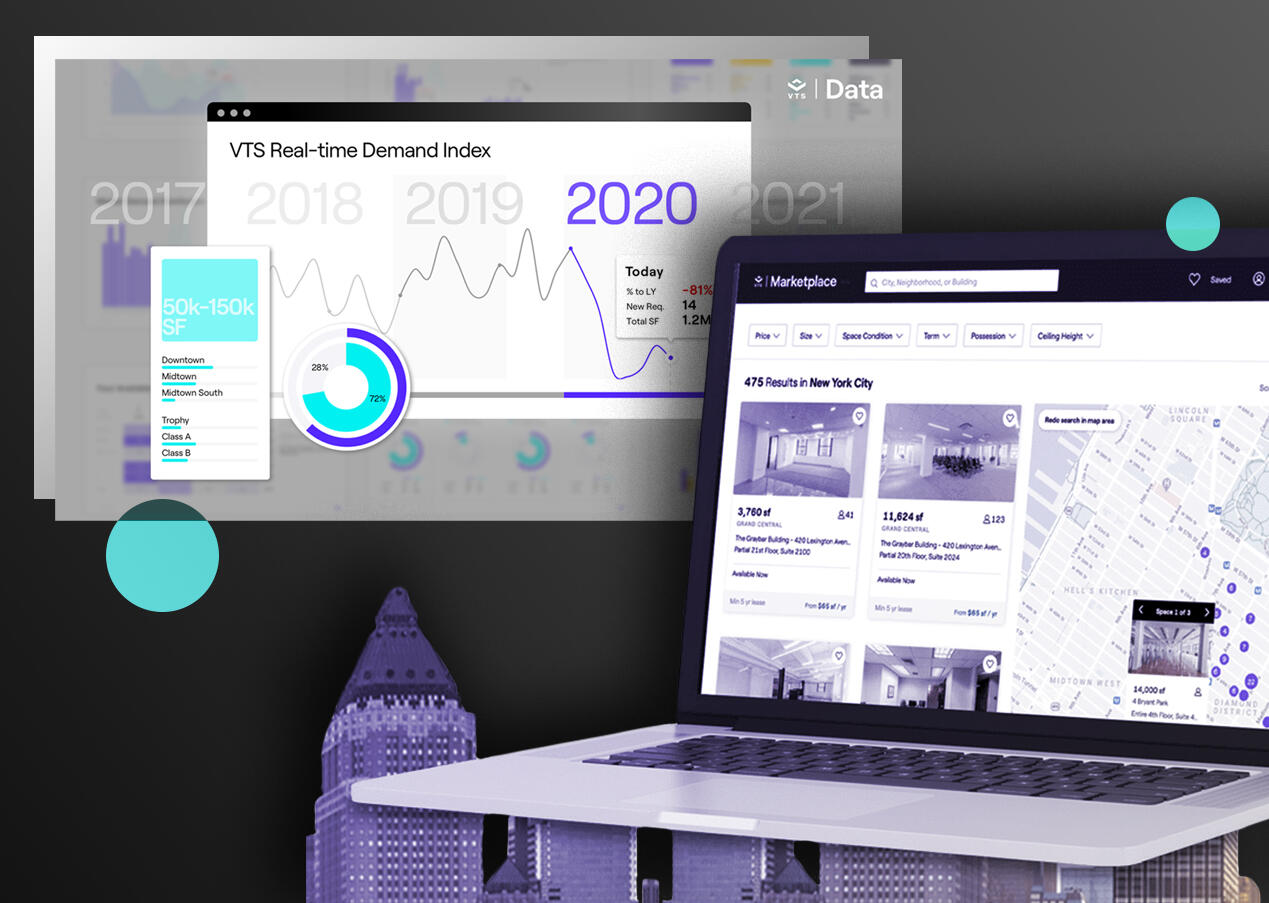There may not be a crystal ball that can read New York’s cloudy commercial real estate market, but landlords, brokers and savvy tenants have found something just as good.
Since the near collapse of the city’s office leasing business one year ago, the industry has become only more confused. Will workers come back in the spring or summer? Are tenants looking for larger floor plans for social distancing, or will they demand compact, collaborative spaces for their vaccinated staff? How much of a premium will now-coveted amenities, like outdoor space and contactless elevators, command? What’s the best use of a long-term vacancy, and what’s the best way to market it in the current environment?
With a full rebound of the commercial market not projected until 2025, commercial experts told The Real Deal that the challenge of answering those pressing questions with clarity has already forever transformed the business of CRE. From listing to close, crucial decisions that were once made over a steak lunch and handshake are now being solved efficiently with cutting-edge data science and tech tools, leading to superior financial outcomes.
“2020 really served as a forcing function for those in the CRE community who were resistant to integrating processes with technology. There’s now the consensus that proptech is no longer a ‘nice to have,’ but a ‘need to have’” said Ryan Masiello, chief strategy officer and co-founder of VTS, a digital leasing, marketing and asset management platform, which now manages more than 60 percent of the nation’s Class A office space and over 65 percent of the Manhattan office market for top companies. “This isn’t a temporary solution to a challenging market. Many of these changes are here to stay.”
As proof of that sea change, Masiello points to many of the city’s largest developers and landlords, including Tishman Speyer, Brookfield Properties and Oxford Properties Group. All of those commercial giants have abandoned expensive and challenging third-party tools and turned to VTS Market, the firm’s landlord-facing, all-in-one digital marketing suite, to manage their inventory and provide a better experience to both the tenant rep and their end customer, the tenant.
Coupled with VTS Data’s outward view of markets — the specifics of what amenities are being used, how tenants are moving around and interacting inside the four walls of a building — and its ability to use real-time data and analytics to list, market and close a deal within one integrated system, the two offerings have converted commercial real estate insiders to digital marketing for good.
With VTS Market, landlords now have the ability to make informed marketing decisions based on data that tracks sentiment, demand and tenant behavior at a moment when the pandemic has left many guessing. That information — a combination of statistics, machine learning, novel data sets and business application — allows building owners to craft compelling showcases of their available spaces with high-quality digital videos, photos, floor plans and 3D renderings and, most importantly, to track the performance of those materials.
That digital marketing content is then pushed to VTS Marketplace, a tenant rep broker-facing platform that enables brokers to more easily capture demand by interacting with listings online and sharing them with the clients that they serve, who can then do things like virtually tour spaces — narrowing the list of availabilities they need to see in person. That seamless flow means that deals are closed more quickly and that vacancies are reduced. For brokers — traditionally the most face-to-face dealmakers in the market — battling for ebbing business in a challenging market, the switch to an all-digital platform has opened the doors to fresh leads and opportunities, as well as a more time-efficient life cycle with deals.
Post-deal, tenant-experience technology platforms — such as VTS Rise, which resulted from VTS’ recent acquisition of Rise Buildings — are also proving to be incredibly valuable, particularly in a post-Covid environment. As companies begin to bring their employees back to work in an in-person setting, VTS Rise makes the management of pandemic protocols, such as elevator and gym capacity restrictions, seamless and also allows landlords visibility in how their tenants are engaging with their properties to ensure people are returning to work in the safest manner possible.
“What Covid has done is accelerate everyone’s mindset across the board around technology,” said Masiello. “It’s now a necessity for managing your spaces, communicating to tenants and addressing their current needs. And this isn’t a temporary fix to address the complexities of the pandemic. Tech and data have now made it easier for landlords and tenant reps to do business — the insight and ease they provide ensures that they’re here to stay.”

